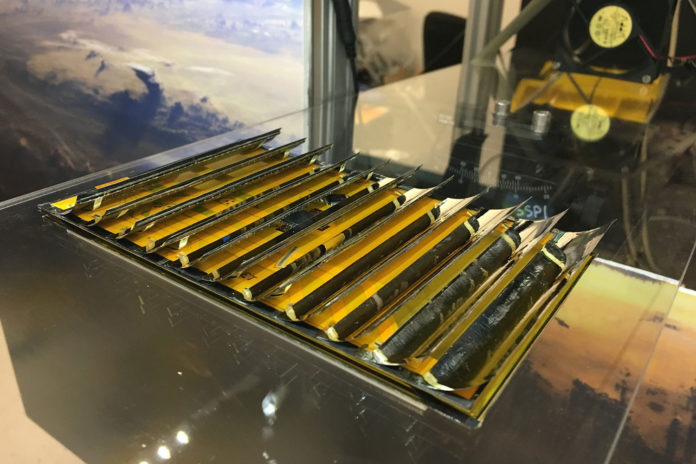California Institute of Technology (Caltech) has received $100 million in funding for their Space-based Solar Power Project (SSPP), which is developing technology capable of generating solar power in space and beaming it back to Earth.
Caltech describes the project as “collecting solar power in space and transmitting the energy wirelessly to Earth through microwaves enables terrestrial power availability unaffected by weather or time of day. Solar power could be continuously available anywhere on Earth.”
The Space-based Solar Power Project has been underway since at least 2013 when the first donation arrived from Donald and Brigitte Bren. The gift is now being disclosed as SSPP nears a significant milestone: a test launch of multifunctional technology-demonstrator prototypes that collect sunlight and convert it to electrical energy, transfer energy wirelessly in free-space using radio frequency (RF) electrical power, and deploy ultralight structures that will be used to integrate them.
The idea emerges naturally from the current limitations of renewable energy. Solar energy is ubiquitous on the surface, but of course, it is highly dependent on the weather, the season, and the time of day. Even under ideal circumstances, no solar panel can operate at full capacity all the time, so the problem becomes transferring and storing energy in a smart grid.
However, a solar panel in orbit may be exposed to full sunlight almost all the time, and without the reduction of its power that comes from that light passing through the planet’s protective atmosphere and magnetosphere.
“This ambitious Space-based Solar Power Project is a transformative approach to large-scale solar energy harvesting for the Earth that overcomes this intermittency and the need for energy storage since sunlight shines continuously in space,” said SSPP researcher Harry Atwater in the Caltech press release.
The first test of the project will occur in early 2023. The prototypes with the solar power generators and RF wireless power transfer should have a deployable structure measuring roughly 6 feet by 6 feet.
Currently, the researchers are still working on ways to collect enough energy that it’s worth doing in the first place and to beam that energy down to the surface in a way that doesn’t lose most of it on its way down.
The final system is envisioned to consist of multiple deployable modules in close formation flight and operating in synchronization with one another. Each module is several tens of meters on the side, and the system can be built by adding more modules over time.
SSPP aims to ultimately produce a global supply of affordable, renewable, clean energy. A key benefit of harnessing solar power from space is that it provides access to the sun to create power all day, every day, free from weather constraints or darkness of night. The research team believes that this type of energy generation – if it takes place on a large scale – could satisfy the increasing demand for electricity on Earth.
